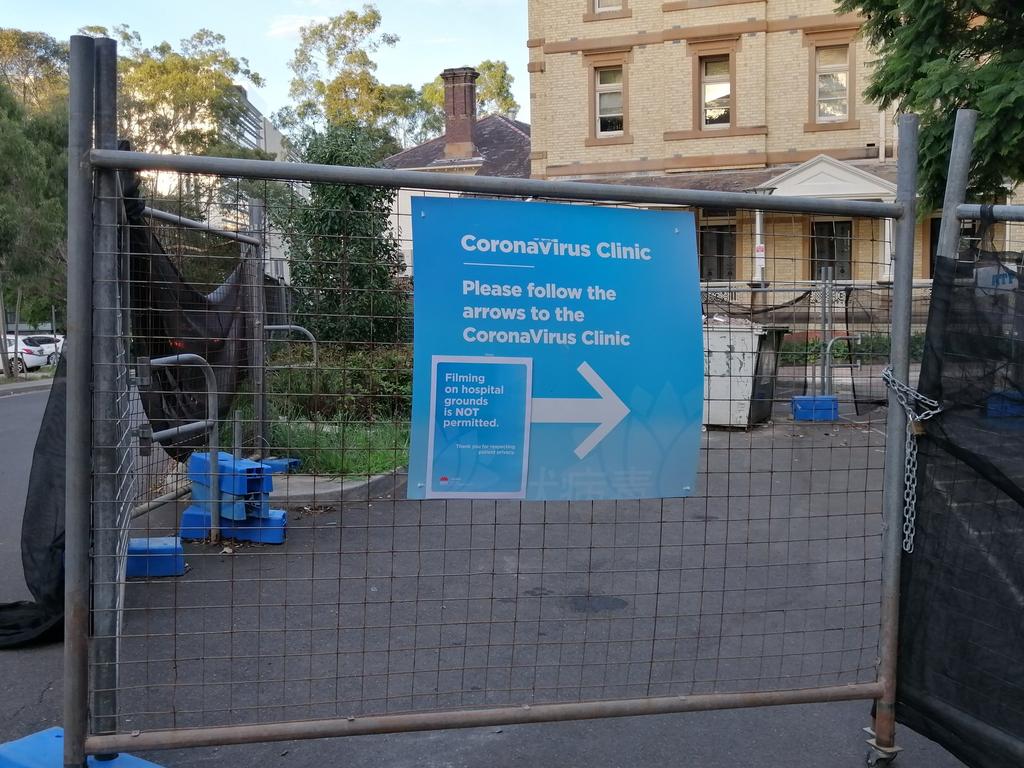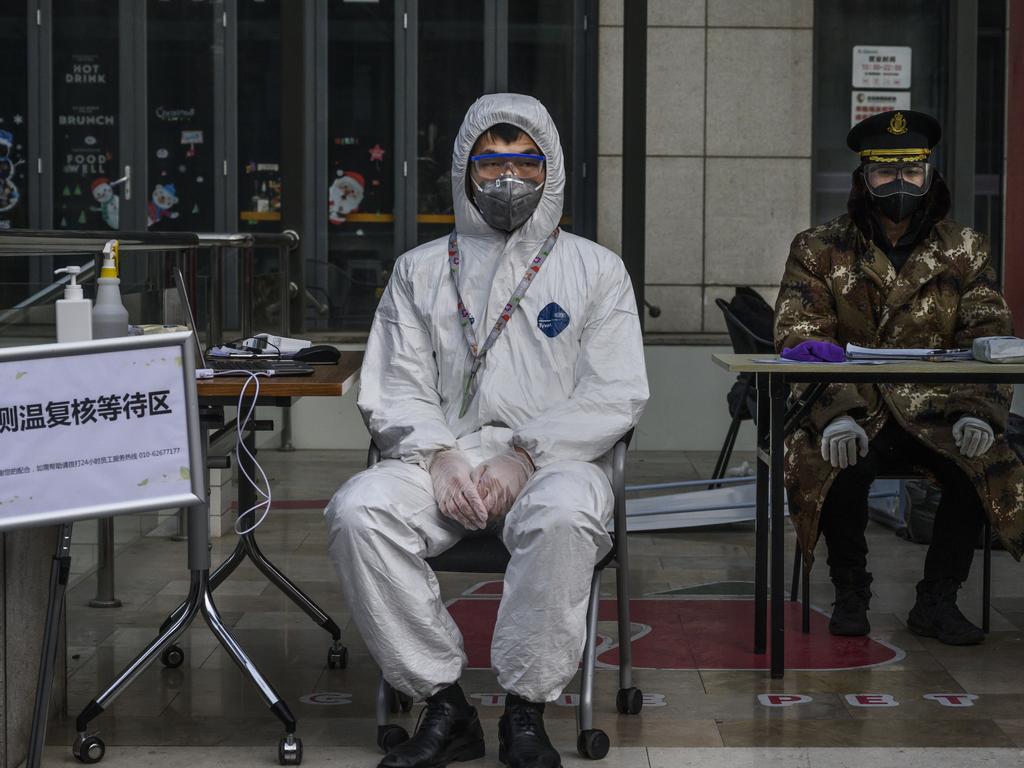RPA coronavirus clinic swamped by hundreds of suspected cases
New South Wales’ only coronavirus clinic, staffed with just one doctor, has been flooded with hundreds of suspected cases since it opened last month.
EXCLUSIVE
The first — and only — coronavirus clinic in New South Wales has been swamped by hundreds of suspected cases since opening its doors last month, authorities say.
The clinic, located next to the emergency department of the Royal Prince Alfred Hospital in the inner west Sydney suburb of Camperdown, is currently staffed by just one doctor and two nurses.
According to Sydney Local Health District (SLHD) records, the trio has seen a whopping 300 people who presented with symptoms of SARS-CoV-2 — the new coronavirus that causes COVID-19 disease — in a period of less than 30 days.


More than two thirds of those were suspect enough to warrant further investigation.
“About 220 of those who met the case definition required testing,” a NSW Health spokesperson told news.com.au, adding none had returned a positive result so far.
It was unclear what proportion of the 300 had been referred to the clinic by their GPs versus those sent there by the emergency department.
However the high volume of suspected cases — despite no evidence of the disease spreading within Australia — is an indication of the type of pressure health workers are likely to face in the event of an outbreak.
The government has asked Australians who fear they may have contracted the virus to ring their GP for advice instead of turning up in person and potentially infecting others in the waiting room.
The NSW Government guidelines for doctors recommend coronavirus tests for patients who “present with fever or acute respiratory infection and in the 14 days before the onset of illness have either had contact with a confirmed case of COVID-19 or travelled to (including transit) mainland China”.
It also advises doctors to “consider COVID-19 testing for patients who have travelled (excluding transit) in Thailand, Hong Kong, Japan, Singapore, Indonesia, South Korea or Iran in the 14 days before the onset of illness”.
HOW TESTING WORKS AT THE CORONAVIRUS CLINIC
If you are sick and meet the criteria for a suspected coronavirus case, you can arrange to have a COVID-19 test at the RPA’s coronavirus clinic.
“Those needing assessment for coronavirus are encouraged to ring ahead to the hospital,” NSW Health told news.com.au.
“On arrival (patients) are assessed by a triage nurse and if they meet the case definition, and coronavirus is suspected, swab tests are taken.
“The results can take between six and 24 hours, depending on the time of the test.”
Patients who are unwell or unable to self-isolate — such as those who live interstate — are then admitted to hospital while they await the results. Those who live in proximity and are well enough to do so will be sent to home quarantine.
“This is assessed clinically on a case-by-case basis,” the NSW Health spokesperson said.
Experts have warned up to 70 per cent of Australians could be infected with the new coronavirus in the event of a severe pandemic, potentially pushing our already overburdened public health systems to breaking point.
It comes as a Brisbane pharmacy also restricted sales of medical masks and Chief Medical Officer Brendan Murphy warned Australians not to waste them.
“No one should go around wearing and wasting face masks, please,” Professor Murphy said.
Experts insist good personal hygiene, particularly hand washing, is crucial as a line of defence.
Prime Minister Scott Morrison this week activated the nation’s emergency response plan to contain the COVID-18 outbreak, which has infected more than 83,000 people in 50 countries and killed at least 2,858 people.
Mr Morrison characterised the risk of a global pandemic as “very much upon us”.
Entitled “The COVID-19 plan”, the blueprint presents a strategy for dealing with the event of a large-scale coronavirus outbreak amid warnings a pandemic is looming.
RELATED: “It’s coming”: No way Australia can escape the virus
RELATED: Coronavirus outbreak spreads across Europe
RELATED: Sweating minister infected with virus
“The novel coronavirus outbreak represents a significant risk to Australia,” the document says. “It has the potential to cause high levels of morbidity and mortality and to disrupt our community socially and economically.”
The COVID-19 plan outlines three degrees of severity for the virus.
The “low” impact is comparable to the 2009 swine flu pandemic. The document notes that at the peak of such an outbreak, primary care and hospital services may become stretched in areas associated with respiratory illness and acute care. However, existing plans and laws should be enough to support activities.
A “moderate” outbreak would put hospitals under “severe pressure”, particularly in areas associated with respiratory illness and acute care.
“Surge staffing and alternate models of clinical care, such as cohorting and/or establishment of flu-like clinics may need to be employed to cope with increased demands for healthcare,” it notes.
“Pressure on health services will be more intense, rise more quickly and peak earlier as the transmissibility of the disease increases. Healthcare staff may themselves be ill or have to care for ill family members, further exacerbating pressures on healthcare providers.”
A “high” outbreak would be comparable to the extreme 1918 “Spanish flu”, which infected one third of Australians and killed between 50 to 100 million people globally.
In this scenario, government plans contemplate successive waves of pandemic reaching Australia and spreading throughout the community.
Quarantine, self-isolation and social distancing measures could be encouraged or enforced in order to slow the spread of the virus through the community.




